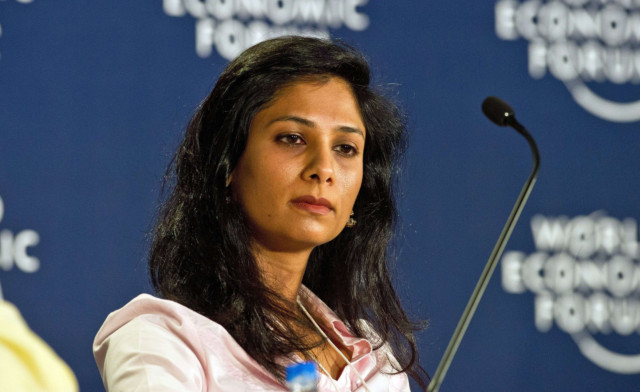
The International Monetary Fund (IMF) cut its world economic growth forecast for 2022 as the COVID-19 pandemic enters its third year, citing weaker prospects for the US and China along with persistent inflation.
The global economy will expand 4.4 per cent this year, down from an estimate of 4.9 per cent in October, the Washington-based IMF said in its World Economic Outlook on Tuesday. The fund forecast 3.8 per cent growth for 2023, up from the prior projection, but cumulative expansion for the two years will still be 0.3 percentage point less than previously forecast.
The US, the world’s largest economy, saw its forecast cut on the outlook for President Joe Biden’s spending agenda and China, the second-biggest, on challenges in real estate.
The world economy expanded 5.9 per cent last year, the IMF estimated, the most in four decades of detailed data. That followed a 3.1 per cent contraction in 2020 that was the worst peacetime decline in broader figures since the Great Depression.
Central banks that slashed interest rates to soften the economic decline caused by the pandemic face pressure to tighten policy to confront surging consumer prices, threatening to curtail the growth rebound. Governments also have less fiscal space for spending to address health needs and buoy their economies after piling up record debt.
‘Be ready’
“The last two years reaffirm that this crisis and the ongoing recovery is like no other,” Gita Gopinath, who became the fund’s No. 2 official this month after three years as its chief economist, wrote in a blog accompanying the report.
“Policy makers must vigilantly monitor a broad swath of incoming economic data, prepare for contingencies, and be ready to communicate and execute policy changes at short notice,” Gopinath said. “In parallel, bold, and effective international cooperation should ensure that this is the year the world escapes the grip of the pandemic.”
Read more
- Pakistan central bank keeps interest rate steady as inflation seen easing
- Sri Lanka inflation hits record 14% as food crisis worsens
- 5 ways to protect investments from inflation and make profits in times of crisis
- Inflation’s grip tightens on world’s leading economies
- Turkey to see inflation rate peaking at about 40% in 2022, says finance minister
While the IMF sees the Omicron variant weighing on growth in the first quarter, it expects the negative impact to fade starting in the second quarter, assuming that the global surge in infections abates and the virus doesn’t mutate into new variants that require more restrictions on mobility.
Supply-chain disruptions are spurring more broad-based inflation than anticipated, the IMF said, with the annual rate projected to average 3.9 per cent in advanced economies this year, up from a prior 2.3 per cent estimate, and 5.9 per cent in emerging and developing nations.
The IMF sees the faster pace for cost-of-living increases easing gradually later this year, assuming price expectations remain well anchored, as shipping bottlenecks ease and major economies respond with interest-rate increases.
Advanced economies raising interest rates may create risks for financial stability and emerging-market and developing economies’ capital flows, currencies and fiscal positions after debt levels increased, the IMF said.
International cooperation will be needed to preserve nations’ access to cash and facilitate orderly debt restructuring where needed, the fund said.
IMF projections
The projections assume that bad health outcomes from COVID-19 recede to low levels in most countries by the end of this year, vaccination rates improve and treatments become more available. Risks are tilted to the downside, with new variants threatening to extend the pandemic.
Bringing the pandemic to an end depends on ending vaccine inequality, the IMF said. The fully vaccinated share of the population is about 70 per cent for high-income countries but less than 4 per cent for low-income nations. Eighty-six nations, accounting for 27 per cent of the world’s population, fell short of the 40 per cent vaccination level for the end of last year that the IMF estimates is needed to curb the pandemic.
The world also suffers from deep inequality in COVID-19 testing, with testing rates about 80 times higher in high-income nations than low-income countries.












